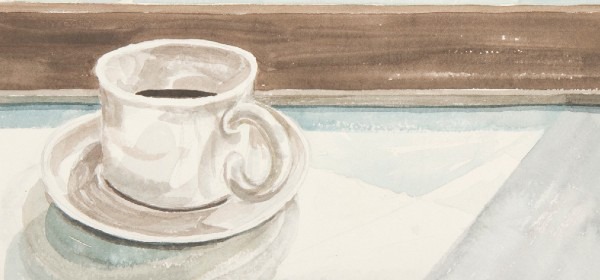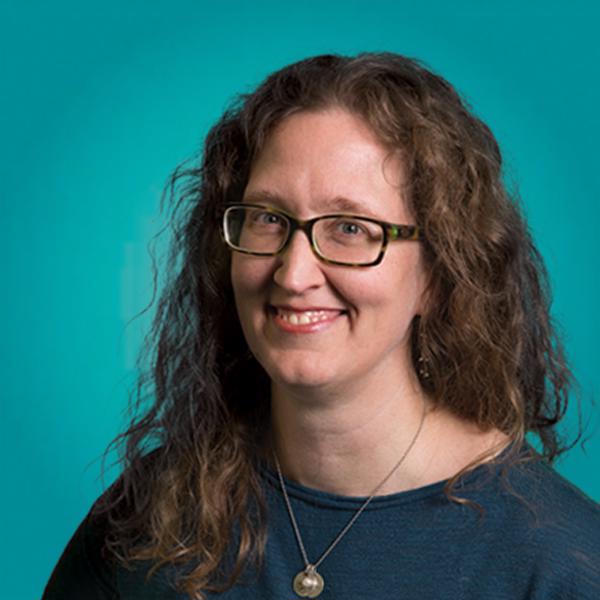Explore Watercolors
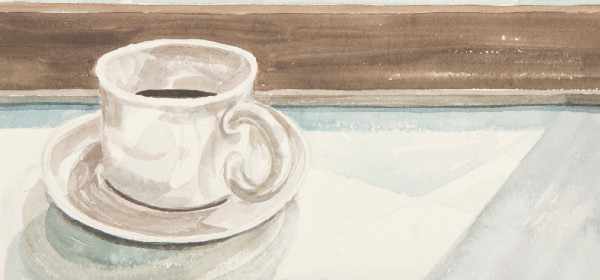
Untitled, Alice C. Sabatini, watercolor, Gift of Judith and Frank Sabatini
As I watch spring come alive from my dining room window, I am drawn to the colors and shapes. I wanted to try to capture this time and wanted to challenge myself to learn something new. For me painting in any form is often hard and frustrating so I try to steer clear. However, during this time of constant change, how can I tell my son to be accepting of change and work through his frustrations and not model the way?
Embracing Watercolors
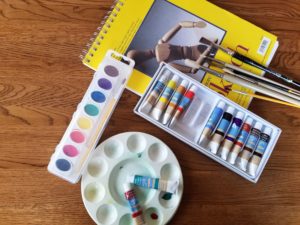 I have taken the bull by the horns, as they say, and I'm trying watercolors for the first time. Looking through my art bins at home, I found two different types of watercolor paints – the pan or cake (think of the kind of watercolors we used in elementary school) and tubes. Both are fun to use, but the color in the tubes was richer so I used these.
I have taken the bull by the horns, as they say, and I'm trying watercolors for the first time. Looking through my art bins at home, I found two different types of watercolor paints – the pan or cake (think of the kind of watercolors we used in elementary school) and tubes. Both are fun to use, but the color in the tubes was richer so I used these.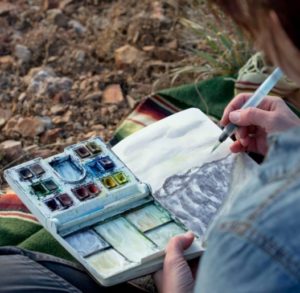 Watercolors are made from pigments (the colors) that are finely ground and mixed with a binding agent (like gum arabic). The binding agent helps keep the pigment on the paper once the water dries. You can apply the watercolor to the paper in a wet-on-wet manner, where you wet the paper and then apply your colors. Or you can use a wet-on-dry technique, where the watercolor is applied to a dry piece of paper. Another great feature of watercolors is they are really easy to transport. If you want to take your painting out into the backyard, the forest or a flower garden, all you need is water to activate your colors, and boom, you are painting.
Watercolors are made from pigments (the colors) that are finely ground and mixed with a binding agent (like gum arabic). The binding agent helps keep the pigment on the paper once the water dries. You can apply the watercolor to the paper in a wet-on-wet manner, where you wet the paper and then apply your colors. Or you can use a wet-on-dry technique, where the watercolor is applied to a dry piece of paper. Another great feature of watercolors is they are really easy to transport. If you want to take your painting out into the backyard, the forest or a flower garden, all you need is water to activate your colors, and boom, you are painting.Different Watercolor Techniques
Now that I had my supplies, I wanted to see examples of different watercolor techniques. I turned to the library’s art collection to see various ways artists use the medium. Here are a few of my favorites.
Finding Influencers
As promised, here is my first attempt at watercolor since I was in elementary school. Maybe you can see some influence of Walter Hatke in my landscape on the left.
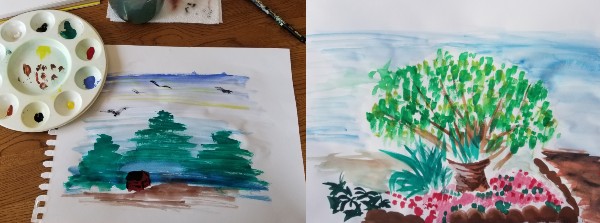
Left: wet-on-wet example of watercolor. Right: wet-on-dry example of watercolor.
While I am drawn to the loose style of Robert Sudlow and the early work of Walter Hatke, I am amazed at the work of Dean Mitchell, Barbara Waterman-Peters, Lisa Grossman, Clive Fullagar and Diane Lawrence. Their ability to create such detailed work with such a difficult medium, is mesmerizing.
Try a Watercolor Project
What if you don't have any watercolors at home? Well, you can play with food coloring! Food coloring acts like inks and watercolors.
For this activity you need a brown paper bag/or watercolor paper, food coloring and straws













